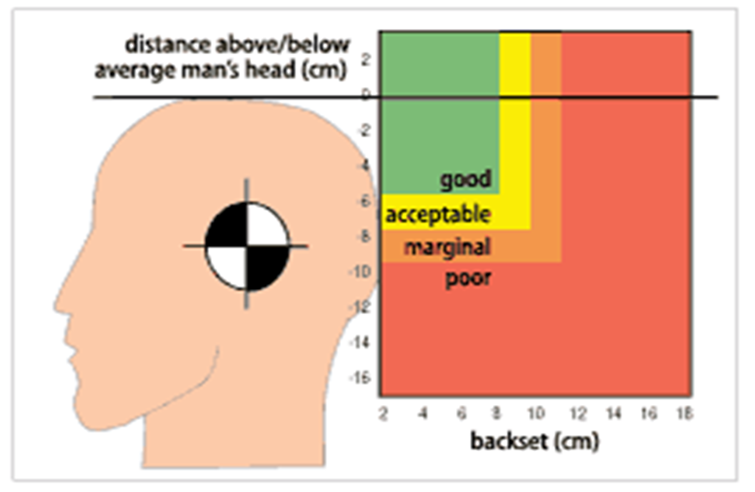Chiropractic Benefits go far beyond alleviating back and neck pain …MYTH or TRUTH?
125 years of Chiropractic care has resulted in millions of elated patients across the globe, and patient satisfaction scores are higher with chiropractors than any other classification of doctor. While Chiropractic physicians continue to develop as the second largest health care provider in the world, many medical doctors and mainstream medical institutions remain ignorant of the research and science behind the short and long-term benefits that Chiropractic adjustments provide for people of all ages, and yes, even for babies!
Most Common Myth: Chiropractic adjustments only help musculoskeletal
Injuries or help reduce spinal pain.
Truth: Chiropractic is proven to help musculoskeletal health and organ health while also
positively influencing hormones and human performance.
Let’s start with those babies … In 1992, research was published in The Journal of Manual Medicine on the pathogenic potential of the craniovertebral junction (base of the skull) in 600 newborns and young children with a history of birth trauma. Most babies had asymmetric posture, and the following:
1) Tilt posture of the head / torticollis.
2) The head is held in extension to the point where the baby was unable to lie on the back.
3) “Uniform sleeping posture, the child cries if the mother tries to change its position.”
4) Asymmetries of movement patterns.
5) Asymmetric posture of trunk or extremities.
6) “Sleeping disorders, the baby wakes up crying every hour.”
7) “Extreme sensitivity of the neck.” [Roy Sweat scanning test]
8) Asymmetry or swelling of the face / head.
9) Asymmetries of the gluteal muscles.
10) “Asymmetric hip development and range of movement / Retarded development of the hip joints.”
11) Fever of unknown origin.
12) Loss of appetite.
13) Feet deformities.
14) Pathological reflexes.
15) Mobility of the cervical or other spinal regions spine reduced by more than 30%.
16) The parent reporting that the baby does not eat or drink well.
This author noted and concluded that:
1. Babies with a contracted sternocleidomastoid muscle should not be subjected to operative measures to lengthen the muscle because they will nearly always respond perfectly to “Manipulation of the upper cervical spine.”
2. When treating pediatric C-scoliosis and movement asymmetries, manipulation of the suboccipital region is superior to physical therapy because “suboccipital strain is the leading factor.”
3. Manipulation of the occipital-cervical region leads to disappearance of problems that the parents had not reported because they did not see a connection with the spine. These parents would regularly note that their child would eat or sleep much better since the manipulation.
4. Doctors should check
ALL CHILDREN for restricted movement of the head and for increased pain sensitivity of the upper cervical spine. (this is rarely done outside of chiropractic care)
Important nutrients delivered to the brain through proper alignment and movement of the spine account for why Chiropractic spinal care is so important. A study published in 2011 explained that a specialized group of hormones play a significant role in why Chiropractic adjustments achieve such great health results.
Hormones serve as chemical messengers that secrete directly into the blood and before being carried to organs and tissues to help direct function. Any procedure that influences hormones will powerfully and directly influence all bodily functions. Optimal health and performance only occurs when hormones are balanced and coordinated.
Research published in 2009 from Johns Hopkins University listed a group of symptoms or conditions linked directly to the increase of a specific hormone called noradrenaline.
The list includes: cancer, bipolar disorder, excessive body weight, hypertension,
type 1 autoimmune diabetes, type 2 diabetes, glaucoma, osteoarthritis,
rheumatoid arthritis, asthma, and immune system function.
One of the more notable symptoms linked to increased noradrenaline levels is excessive weight gain. Many patients of either gender have experienced some form of weight loss after starting Chiropractic care. Adjustments help restore hormonal balance and produce favorable health changes in overall body function. Balanced hormones through the power of the chiropractic adjustment helps maximize every lifestyle and health change adopted by a patient.
Chiropractic helps balance hormones by reducing central nervous system dysfunction and sympathetic dominance that exists due to vertebral subluxation. Science proves that chiropractic adjustments lower stress hormones while helping coordinate and balance other chemical messengers through improved brain and organ function. Even cardiac function and blood pressure have been shown to improve in the clinical research. Chiropractic physicians address the spinal educating the world about the deleterious health conditions that begin forming when influenced by improper spinal mechanics and bad posture.
Switching gears, what about depression and anxiety?
A case study published in the Journal of Upper Cervical Chiropractic Research in June 2013, reports on chiropractic helping patients with depression and anxiety. This case series was looking to follow up on previous surveys showing that out of 2818 patients who completed chiropractic care, 76% of those patients reported a mental/emotional improvement, as well as positive changes in stress and life enjoyment over a period of several months following the chiropractic care. Additional prior studies also showed chiropractic care assisting patients with these types of mental health disorders.
This case series study involved six patients who were not under any psychotherapy at the time and were given tests using standard scales of psychological testing to determine and measure their mental state prior to and after the chiropractic care.
All six participants also suffered from a variety of problems including: musculoskeletal pains, asthma, hypertension, gastrointestinal issues, and sleep disorders. Those who were taking medications made no changes to their medications during the study to rule out any improvement due to medication.
For the purposes of this study, care was limited to only 12 chiropractic visits over a six week period. A number of protocols were used both to monitor the chiropractic correction of subluxations as well as to measure improvement in depression or anxiety.
One participant left the program due to a family emergency, therefore results were recorded for five of the six participants. The remaining five participants all showed positive results in most of the areas that the researchers measured. All five also showed positive test results for a decrease in nerve interference from subluxation.
1. All five participants showed a “…significant decrease in depressive symptom ratings.”
2. All five measured a “…significant decrease in anxiety.”
Additionally, four of the five participants who completed the study also reported a self-feeling of improvement with their depression, enough to state that they would recommend this type of care to others with depression. Four of the five participants also reported significant improvements in the other health issues and problems they were suffering from at the beginning of the study.
In their conclusion the authors wrote, “The results provide tentative support for the effectiveness of upper cervical (neck) chiropractic care for anxiety and depression symptoms.” They also stated, “The present study found reduction in anxiety and depression symptoms and reduction in overall psychological distress among individuals with mild to severe depression, anxiety or both.”
In conclusion, chiropractic adjustments help maximize body function and should be utilized to improve health and performance for family members of all ages. The research reviewed here is just a small sample of what has been reported and published. Knowing this, some osteopaths and physical therapists manipulate the spine too, but over 95% of spinal manipulation is performed by chiropractors, who have the most education and training on the spine, posture and the health consequences. Anatomy, physiology, and scientific research have confirmed what chiropractic patients have known for years, CHIROPRACTIC WORKS!
References:
- Eric Kandel, James Schwartz, Thomas Jessell, Principles of Neural Science. McGraw-Hill, 2000.
- Proceedings of the National Academy of Sciences U S A. 2008 Jun 17; 105(24): 8369 – 8374. (Dean Ornisch genetics study)
- Biedermann H. Kinematic imbalances due to suboccipital strain in newborns. J. Manual Med (1992) 6:151 - 156.
- “Impact of Osteopathic Manipulation in Secretory IgA in Stressed Populations” Journal of Osteopathic Association. March 2011
- "Relationship Between Vertebral Deformities And Allergic Diseases" The Journal of Orthopedic Surgery. 2004. Volume 2
- Ogura T., Tashiro M., Masud M., Watanuki S., Shibuya K., Yamaguchi K., Itoh M., Fukuda H., Yanai K. (2011 Nov - Dec) “Cerebral metabolic changes in men after chiropractic spinal manipulation for neck pain”. Alternative Therapies Health Medicine Vol. 17; No. 6; pp.12-7.
- Fitzgerald, P. J. Oct. 2009 "Elevated Noradrenaline levels an etiological factor in a number of diseases" Autonomic and Autacoid Pharmacology. 29(4):143-56
- The Journal of Neuroscience, 1 August 2007, 27(31): 8324-8333 The Neurochemically Diverse Intermedius Nucleus of the Medulla as a Source of Excitatory and Inhibitory Synaptic Input to the Nucleus Tractus Solitarii. Ian J. Edwards, Mark L. Dallas, Sarah L. Poole, Carol J. Milligan, YuchioYanagawa, Gábor Szabó, Ferenc Erdélyi, Susan A. Deuchars, and Jim Deuchars
- Reis MS, Durigan JL, Arena R, Rossi BR, Mendes RG, Borghi-Silva A; Effects of Postero-anterior Thoracic Mobilization on Heart Rate Variability and Pain in Women with Fibromyalgia; Rehabilitation Research and Practice; May 29, 2014 [epub]
- J Human Hypertension 2007 (May); 21 (5): 347–352. Bakris G, Dickholtz M, Meyer PM, Kravitz G, Avery E, Miller M, Brown J, Woodfield C, Bell B. Department of Preventive Medicine, Rush University Hypertension Center, Chicago, IL, USA
- Upper Cervical Chiropractic Care as a Complementary Strategy for Depression and Anxiety: A Prospective Case Series Analysis. Lauren Roth PsyD Bio, Diane Zelman PhD Bio, Lauren Clum DC Bio, Justin Roth DC Bio. Journal of Upper Cervical Chiropractic Research ~ June 20, 2013 ~ Pages 49-59









